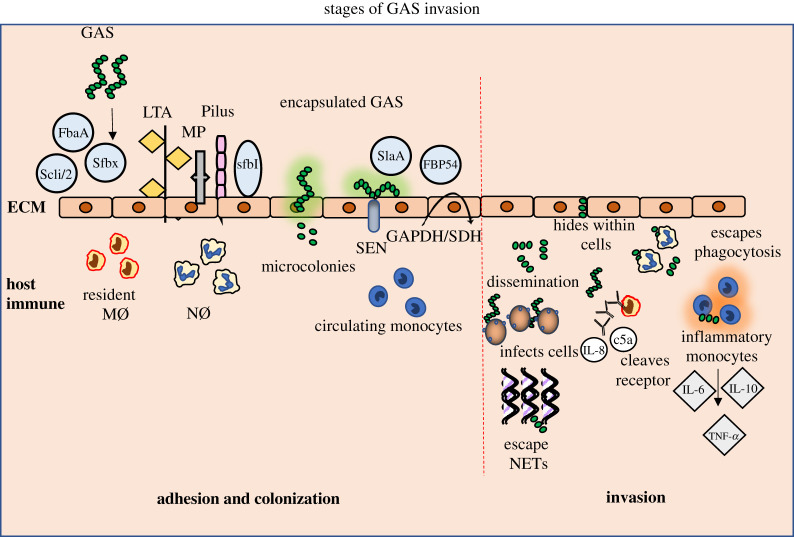Figure 2.
Stages of GAS invasion of the host immune system. A wide range of bacterial protein adhesins engage with the adherence and colonization of the GAS pathogen to the ECM of the host tissue. Initial attachment of GAS is followed by formation of microcolonies accompanied by cell wall-anchored adhesins and anchorless enzymes. Once colonized within the tissue sites GAS disseminates inside the host by surviving and multiplying. GAS survives by different mechanisms, including hiding within the epithelial cell lines, inhibiting phagocytosis and degrading DNase of NETs. GAS-infected cells trigger a strong inflammatory response, thereby inducing a cytokine storm. Abbreviations: GAS, Group A Streptococcus; ECM, extracellular matrix; LTA, lipoteichoic acid; MP, M-protein; FbaA, Scli/2, sfbX, sfbI, SlaA, FBP54, protein adhesins; SEN, streptococcal surface enolase; streptococcal surface dehydrogenase, GAPDH/SDH; MØ, macrophages; NØ, neutrophils; NETs, neutrophil extracellular traps.

